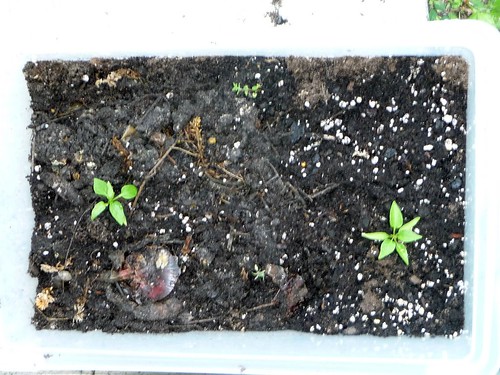This morning, I went out and took a good hard look at my compost. It was deemed usable after having sat for two weeks outside in a bin with some garden soil. (Ok, I actually used a garbage can we didn't need for lack of a better receptacle.) Apparently, it is too acidic when you first take it out of the bucket after fermentation, so you have to let it sit. Plus, it's basically a pile of food scraps; not much dirt there. You're actually supposed to bury it, but I am going to use it in a container garden, so I used the garbage can with a couple layers of dirt to introduce the microbes and bugs that it needs to break it down the rest of the way.
When I poked around in it, it was a little on the stinky side, and there were still big chunks in there, but I could tell it was breaking down into some nice dirt. I also found several worms in there, which was encouraging. I had dug up a few and dropped them in to help with the rotting process, but wasn't sure they would survive. Next time, I think I will make the drainage holes in the bottom of the can bigger and bury the bottom of it in the dirt. Then, the worms can come up and give me a hand without me having to dig for them. If you saw the condition of our yard, you would understand why this is a pain. Also, the worms here are microscopic, not big fat ones like I am used to. I did have some help in the form of Wyatt, who thought digging for worms was great fun, so that was nice.
Because I was using the container instead of the ground, I should have let my compost stew a few more weeks, but I have plants that desperately need to be planted in something other than potting soil. I mixed some of it into one of the containers I have, along with a little sphagnum moss for conditioning, and replanted one of the jalapeno plants that seems to have stalled out in growth. I added a couple tiny thyme plants that are a little on the sad side, and watered them all. Now, I am waiting to see if this stuff works magic or not.
I'm working on a series about what the Bokashi process is like. Until then, you might take a look at this in order to understand what the science behind this composting method is.






0 sonar pings:
Post a Comment